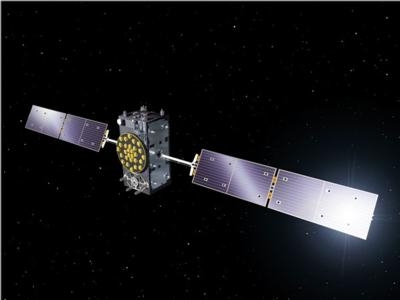Wayward Spacecraft Now Transmitting Navigation Signals
Europe’s fifth Galileo satellite, one of two delivered into a wrong orbit by VS09 Soyuz-Fregat launcher in August, has transmitted its first navigation signal in space on Saturday, November 29 2014. It has reached its new target orbit and its navigation payload has been successfully switched on.

A detailed test campaign is under way now the satellite has reached a more suitable orbit for navigation purposes.
The fifth and sixth Galileo satellites, launched together on 22 August, ended up in an elongated orbit travelling up to 16,100 miles above Earth and back down to 8,521 miles. A total of 11 maneuvers were performed across 17 days, gradually nudging the fifth satellite upwards at the lowest point of its orbit. As a result, it has risen more than 2,175 miles and its elliptical orbit has become more circular.
“The maneuvers were all normal, with excellent performance both in terms of thrust and direction,” explained Daniel Navarro-Reyes, ESA Galileo mission analyst. “The final orbit is as we targeted and is a tribute to the great professionalism of all the teams involved.”
The commands were issued from the Galileo Control Centre by Space Opal, the Galileo operator, at Oberpfaffenhofen in Germany, guided by calculations from a combined flight dynamics team of ESA’s Space Operations Centre, ESOC, in Darmstadt, Germany and France’s CNES space agency.
The commands were uploaded to the satellite via an extended network of ground stations, made up of Galileo stations and additional sites coordinated by France’s CNES space agency. Satellite manufacturer OHB also provided expertise throughout the recovery, helping to adapt the flight procedures.
Until the maneuvers started, the combined ESA–CNES team maintained the satellites pointing at the Sun using their gyroscopes and solar sensors. This kept the satellites steady in space but their navigation payloads could not be used reliably. In the new orbit, the satellite’s radiation exposure has also been greatly reduced, ensuring reliable performance for the long term.
The revised, more circular orbit means the fifth satellite’s Earth sensor can be used continuously, keeping its main antenna oriented towards Earth and allowing its navigation payload to be switched on. Significantly, the orbit means that it will now overfly the same location on the ground every 20 days. This compares to a normal Galileo repeat pattern of every 10 days, effectively synchronising its ground track with the rest of the Galileo constellation.
The satellite’s navigation payload was activated on November 29 to begin the full ‘In-Orbit Test’ campaign. This is being performed from ESA’s Redu centre in Belgium, where a 20 m-diameter antenna can study the strength and shape of the navigation signals at high resolution. “First, the various payload elements, especially the Passive Hydrogen Maser atomic clock, were warmed up, then the payload’s first ‘signal in space’ was transmitted,” said David Sanchez-Cabezudo, managing the test campaign.
The same recovery maneuvers are planned for the sixth satellite, taking it into the same orbital plane but on the opposite side of Earth.
The decision whether to use the two satellites for Navigation and SAR purposes as part of the Galileo constellation will be taken by the European Commission based on the test results.
(Image from file)
 ANN's Daily Aero-Linx (05.06.25)
ANN's Daily Aero-Linx (05.06.25) ANN's Daily Aero-Term (05.06.25): Ultrahigh Frequency (UHF)
ANN's Daily Aero-Term (05.06.25): Ultrahigh Frequency (UHF) ANN FAQ: Q&A 101
ANN FAQ: Q&A 101 Classic Aero-TV: Virtual Reality Painting--PPG Leverages Technology for Training
Classic Aero-TV: Virtual Reality Painting--PPG Leverages Technology for Training Airborne 05.02.25: Joby Crewed Milestone, Diamond Club, Canadian Pilot Insurance
Airborne 05.02.25: Joby Crewed Milestone, Diamond Club, Canadian Pilot Insurance



